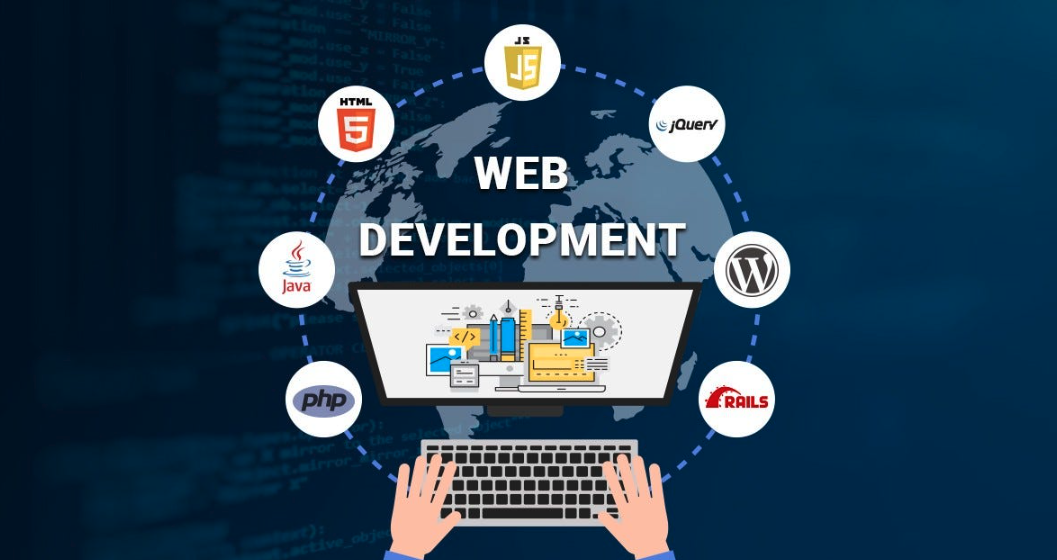Blog Nexalab – In the dynamic world of web development, it is a must to stay informed due to the rapidly changing landscape. The field is constantly introducing new tools and approaches that require ongoing education.
For businesses, staying current means access to cutting-edge technologies that improve website functionality and user experience. This user-centric mindset is critical to customer engagement and retention.
IT professionals can gain from keeping their skills up to date, ensuring their marketability in a competitive job market.
Regularly updating web development skills promotes innovation and efficiency, essential for solving problems and staying ahead in the digital world.
Therefore, continuous learning in web development is vital for both business success and personal career advancement.
What Is Website Development?
Website development is the process of transforming concepts into visually appealing, interactive, and functional online experiences.
Website development involves designing the layout, structuring the content, and implementing the functionality for an effective online presence.
This development process requires a blend of programming skills to build the site’s framework and design insights to ensure user-friendly interfaces. Here are three fundamental components of website development:
- Front-end development: The visible layer that users interact with, using HTML, CSS, and JavaScript to design layouts, add interactivity, and ensure responsiveness across devices.
- Back-end development: The hidden engine that powers the website, using programming languages such as Python or PHP to manage data, handle server-side logic, and connect to databases.
- Content Management Systems (CMS): Platforms such as WordPress or Drupal that simplify content creation and editing, allowing non-technical users to maintain website updates.
Why Websites are Important For Businesses?
Websites are crucial for businesses facing the challenge of digital visibility. With a website, companies can reach broader audiences, leading to missed opportunities.
This problem is heightened in an increasingly online world where customer interactions predominantly occur digitally.
A website addresses these issues by providing a platform for showcasing products, engaging with customers, and enhancing brand credibility.
Effectively, a website acts as a 24/7 marketing tool, driving customer engagement and business growth, which is crucial for staying competitive in today’s fast-paced digital marketplace.
Web Programming vs Web Development
Web programming and web development are often used as if they’re the same, but there are some key distinctions.
Let’s start with web programming. Think of it as the backbone of a website. Web programmers use languages like HTML, CSS, JavaScript, Python, or PHP.
Their job is to build the functionality and interactivity of the website. They handle tasks like creating databases, integrating APIs, and crafting server-side logic.
Web programming requires a deep understanding of coding principles and problem-solving skills.
Now, web development is a broader field. It’s not just about coding. Web development includes everything from planning the website’s structure to designing its layout.
Developers work on integrating content management systems, optimizing search engines, and ensuring the site is accessible.
They need a mix of skills: design thinking, an understanding of UX best practices, and even some basic coding knowledge.
Here’s the thing: web development includes web programming, but it goes beyond it. A skilled web developer understands programming and the broader aspects of creating a website.
While programmers focus on the code, developers combine design, functionality, and user experience.
The good news is we have web developers and web programmers at Nexalab. Both are ready for your website development.
Basics Understanding of Web Development
For anyone interested in web development, understanding these basic concepts is fundamental.
You can build a solid foundation for creating secure, functional, and engaging websites by understanding the interplay between domains, servers, front-end, back-end, CMS, and cybersecurity.
1. What is a Website?
A website is a digital platform accessible via the internet, offering a combination of text, images, and other multimedia elements.
A website is a virtual space for individuals, businesses, or organizations to present information, engage with users, or conduct transactions.
Websites are fundamental in web development, serving as the end product that developers and designers aim to create and optimize for user interaction and content delivery.
2. What is a Domain?
A domain is the unique address that identifies a Web site on the Internet. A domain is similar to a physical address, directing users to a specific location on the World Wide Web.
Domains are critical in web development for establishing a website’s identity and enhancing its accessibility.
Choosing the right domain name is essential for branding and ease of recall, influencing a site’s visibility and user traffic.
3. What is A Web Server?
A web server is a computer system that hosts websites and delivers web pages to users’ browsers over the Internet.
A web server plays a pivotal role in web development, storing the website’s data and ensuring its availability to users.
The efficiency and security of a web server directly impact a website’s performance and reliability, highlighting its importance in the web development process.

4. What Does Front-end Mean?
The front end refers to the part of a website that users interact with directly. Front-end includes the design, layout, and navigation elements that make a website visually appealing and user-friendly.
In web development, the front end is crucial for creating an engaging user experience, utilizing languages like HTML, CSS, and JavaScript to bring the site’s design to life.
5. What Does Back-end Mean?
In contrast to the front end, the back end involves a website’s server side. The back-end is where the data processing, storage, and management happen.
This aspect of web development is crucial for the functionality of a website, involving databases, server logic, and application integration.
The back-end provides the correct processing and response to user interactions from the front-end.
6. What is A Content Management System?
A content management system (CMS) is software designed to help users create, manage, and modify website content without requiring specialized technical knowledge.
In web development, CMSs are essential for simplifying website maintenance and content updates, allowing for efficient digital content management and enhancing the website’s adaptability to changing needs.
7. What is Cybersecurity?
Cybersecurity in web development refers to the practices and technologies employed to protect websites and web servers from digital attacks and unauthorized access.
Cybersecurity is critical to web development, ensuring the website’s data’s integrity, confidentiality, and availability.
Effective cybersecurity measures safeguard against data breaches and hacking, maintaining user trust and website reliability.
Current Trends in Web Development (2024)
In 2024, several significant trends will shape the web development landscape, bringing unique advancements and opportunities.
Through continuous learning and adaptation, these professionals can ensure their creations remain relevant and thrive in the ever-evolving digital landscape.
1. Progressive Web Apps (PWAs)
PWAs blend the best mobile apps and web pages, offering high performance and user experience even on low-end devices.
They are notable for their speed, functionality, and features like offline access and push notifications.
According to a study by Emergent Research, the global market for PWAs was valued at $1.13 billion in 2019.
Indicating strong adoption of PWAs, analysts predict a significant growth rate, with the market value expected to reach $10.44 billion by 2027.
This growth makes PWA a preferred choice for brands aiming to enhance user engagement and conversions.
2. Responsive and Adaptive Design
Based on Statista’s forecast study, in 2024, the number of mobile users worldwide is projected to reach 7.41 billion.
Developers prioritize responsive and mobile-first designs as mobile internet usage continues to rise.
This approach ensures websites are optimized for various devices, particularly mobile phones, enhancing user interaction and experience.
3. Voice Search Optimization
A study by PwC of 1,000 Americans between the ages of 18 and 64, says 72% of consumers use voice search.
With the increasing use of voice-activated devices, optimizing websites for voice search is crucial.
This trend enhances user-friendliness and accessibility, making websites more interactive and accommodating to a broader audience.
4. Artificial Intelligence (AI) in Web Development
AI and ML are reshaping web development by creating personalized user experiences.
AI-powered chatbots provide round-the-clock customer support. ML-based recommendation engines deliver personalized content suggestions to individual users.
5. Search Generative Experience (SGE)
Search engines are moving beyond text-based queries to understand user intent and context.
SGE aims to deliver information through rich interactive experiences, such as AI-generated summaries or visual content.
Companies implementing SGE strategies can gain a competitive advantage by providing informative and engaging search results aligned with user expectations.
6. Blockchain and Cybersecurity Considerations
As blockchain technology matures, especially for secure data storage and decentralized applications, its integration into web development has immense potential.
However, cybersecurity continues to be a top concern, and developers must implement robust security measures to protect user data and prevent cyber attacks.
Conclusion
In 2024, web development is a dynamic field marked by significant trends. These trends and developments are reshaping the digital landscape, emphasizing user-centric design, personalized experiences, and robust security.
Adapting to these trends is the only way for businesses and IT professionals to create engaging, secure websites that meet evolving user needs and stay competitive.
These advancements in web development are essential to meeting current and future digital challenges and ensuring sustainable success in an increasingly digital world.
Now is the time to harness these advancements for businesses, IT professionals, and you.
This web development scenario increases user engagement and security and prepares your digital presence for future challenges.




